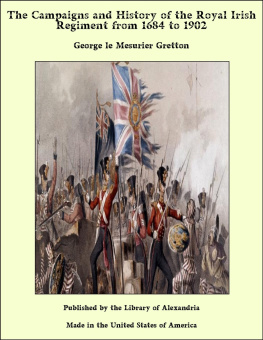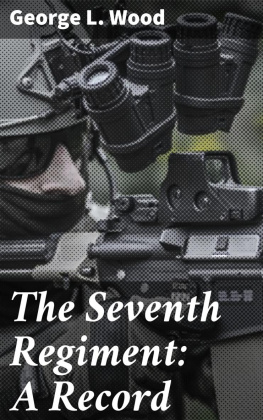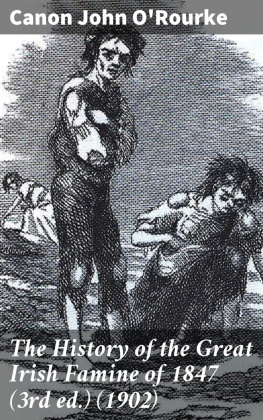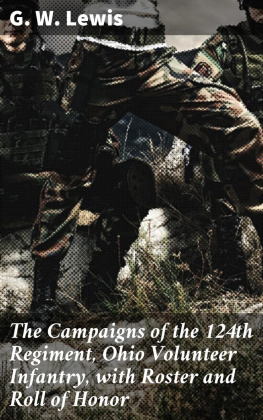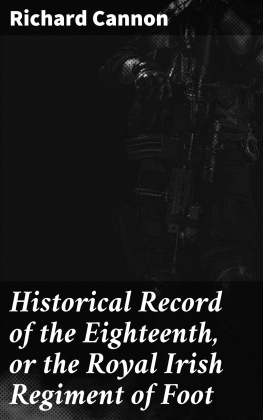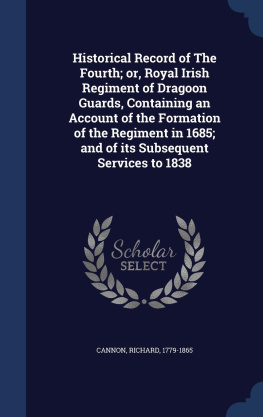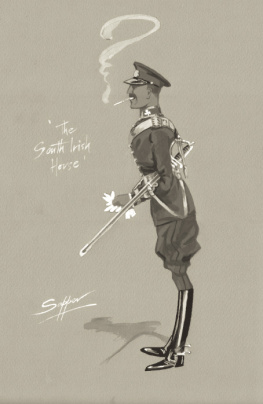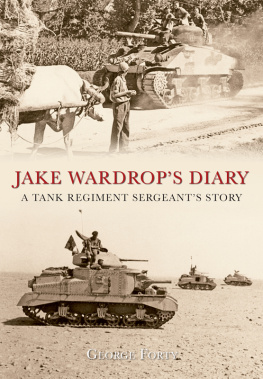PREFACE.
This history of the war services of the Royal Irish regiment has been written at the request of the officers of that very distinguished corps. When I accepted the task, I knew that I had undertaken a delightful but difficult piece of work, for it is no easy matter to do justice to the achievements of a regiment which has fought in Europe, in Asia, in Africa, in America, and in Australasia. After serving with credit in William III.s war in Ireland, the Royal Irish won undying laurels in the Siege of Namur in 1695. They formed part of the British contingent in the army commanded by Marlborough in the Low Countries and in Germany, and fought, not only at the great battles of Blenheim, Ramillies, Oudenarde, and Malplaquet, but in the long series of desperate but now forgotten sieges by which fortress after fortress was wrested from the French. A detachment took part in the defence of Gibraltar in 1727: the whole regiment was involved in the disasters of the campaign of 1745: the flank companies encountered foemen worthy of their steel at Lexington and Bunkers Hill. In the first phase of the great war with France the Royal Irish were in the Mediterranean: they served in the defence of Toulon; they helped Nelson and Moore to expel the French from Corsica, and they were sent to the mainland of Italy where for some months they established themselves firmly at Piombino, a port on the Tuscan coast. A few years later they fought under Abercromby in Egypt, but then their good luck changed, for they were ordered to the West Indies, where they remained till the end of the Napoleonic war.
In 1840, the outbreak of the first war with China re-opened the gates of the Temple of Janus to the XVIIIth; and during the last sixty years almost every decade has seen the regiment employed on active service, for after the Chinese war came the second war in Burma; the Crimea; the Indian Mutiny; the New Zealand war; the second Afghan war; the campaign of Tel-el-Kebir; the Nile expedition; campaigns on the north-west frontier of India; and the war with the Dutch republics in South Africa.
The Historical Committee had hoped that Field-Marshal Lord Wolseley would have written a preface to the history of the regiment, with which throughout his military career he has been associated closely. In Burma he won his spurs leading a charge of infantry among whom were many of the Royal Irish; as an acting Engineer at the siege of Sebastopol he frequently supervised the operations of the regiment in the trenches; in the Tel-el-Kebir campaign and the Nile expedition the Royal Irish formed part of the troops under his command; and for the last thirteen years he has been their Colonel-in-Chief. Ill health unfortunately has prevented Lord Wolseley from writing at any length, but in a letter to the Chairman of the Committee, he expressed his admiration for the regiment in the following words:
Hampton Court Palace, Middlesex ,
19th June 1910.
My Dear Gregorie ,I am indeed very glad to hear that the History of the Royal Irish Regiment is soon to be published. Its story cannot fail to be a fine one. Every soldier who like myself, had the honour of fighting, I may say shoulder to shoulder with it, will read this new work with the deepest interest.
Were it to be my good fortune to lead a Storming party this afternoon I should indeed wish it were to be largely composed of your celebrated corps.
Believe me to be,
Very sincerely yours,
Wolseley .
To General C. F. Gregorie, C.B. ,
Royal Irish Regiment.
A lithographic reproduction of this letter will be found facing
This history has been prepared, not for the officers alone but for all ranks of the Royal Irish, and the Committee are supplying it to non-commissioned officers and private soldiers at a price so low that even the last joined recruit can buy it, and read of the gallant deeds of his predecessors in the regiment.
As I am fully impressed with the importance of recording the names, not of the officers only, but of all members of the regiment who on active service laid down their lives for their country, I have tried to mention in the all ranks who were killed, or died from the effects of wounds or sickness in the many wars in which the Royal Irish have taken part. In the campaigns of the seventeenth and the greater part of the eighteenth centuries but few names are to be found, and it is not until the middle of the nineteenth century that those of wounded non-commissioned officers and men can be traced. In other appendices are lists of those who won medals for distinguished conduct in the field, and also those to whom medals for long service and good conduct have been awarded.
It has been my object to write this book as far as possible on the lines of a biography, and by quotations from regimental sources of information to let the Royal Irish describe their doings in their own words. In the wars of William III. and of Anne this was comparatively easy, for though the regiment has preserved no official records for the 17th and 18th centuries, during the first thirty years of its existence it produced four military historians, three of them officers, one a sergeant. Brigadier-General Kane, Captain Robert Parker, and Sergeant John Millner have left books, and Brigadier-General Robert Stearne a manuscript journal describing the events they witnessed. Unfortunately they all wrote for a public far more concerned in the general results of a battle or a siege than in the doings of an individual regiment; and though they gave excellent accounts of an engagement, they failed as a rule to describe the part played in it by the men under their command. Whether their laconic style was due to modestyfor the three officers were all distinguished soldiersor to want of descriptive power, it is impossible to say, but the fact remains that they have bequeathed to their successors in the Royal Irish accounts singularly deficient in regimental detail. In some cases they failed to record the casualties among the XVIIIth in a battle or a siege, and when they remembered to do so, often forgot to give the names of killed or wounded officers. Their indifference to the losses of the lower ranks is characteristic of all armies in the 17th and 18th centuries; and they tell us nothing of the deaths by disease, or of the drafts of recruits by which the waste of war was made good. Sergeant Millner is equally unenlightening. If, instead of devoting his undoubted talents to the production of a sort of Quartermaster-Generals diary of Marlboroughs movements, he had written an account of the life of the regiment on active service, he would have left behind him a very interesting book, instead of a comparatively dull one.

